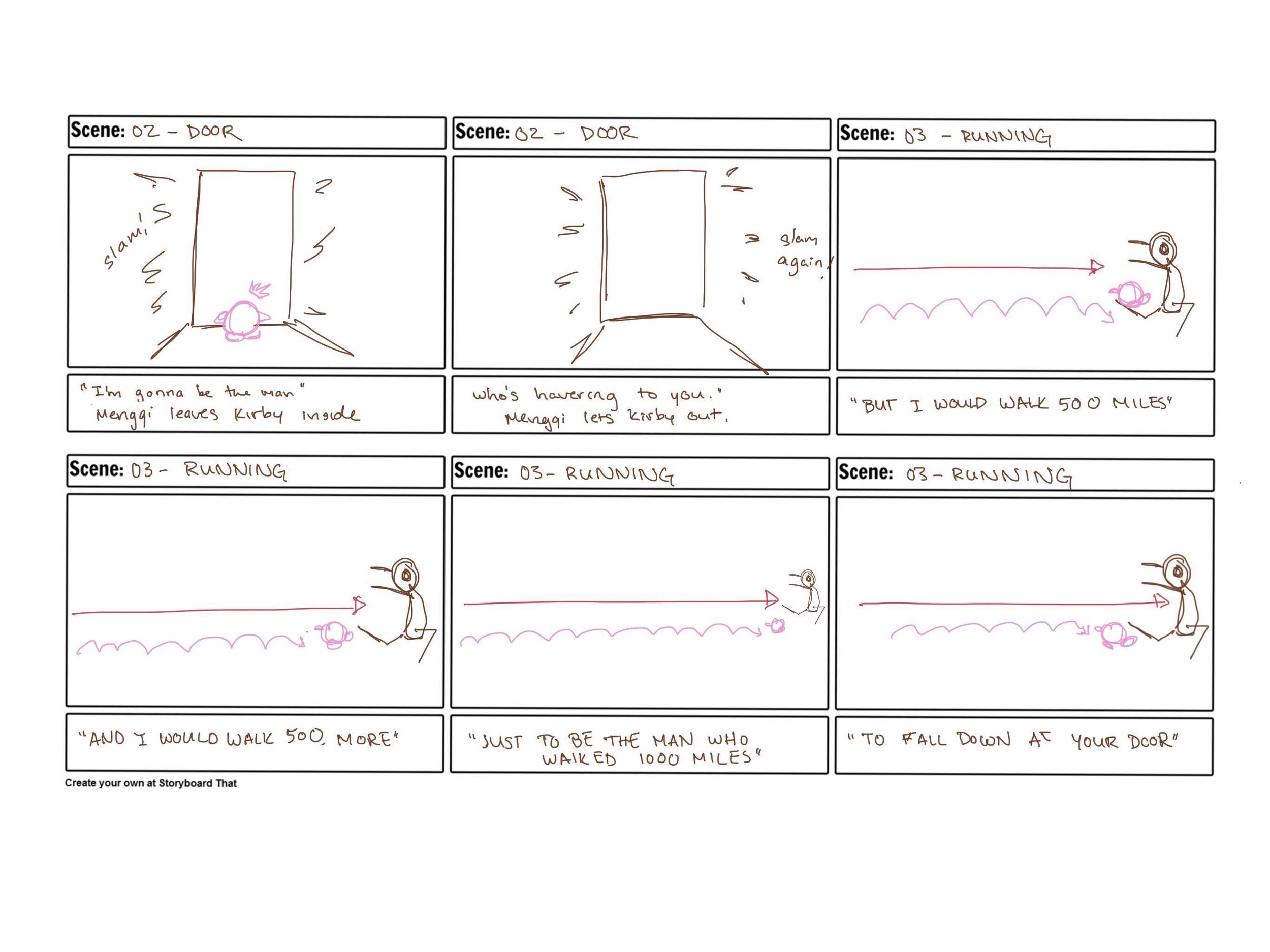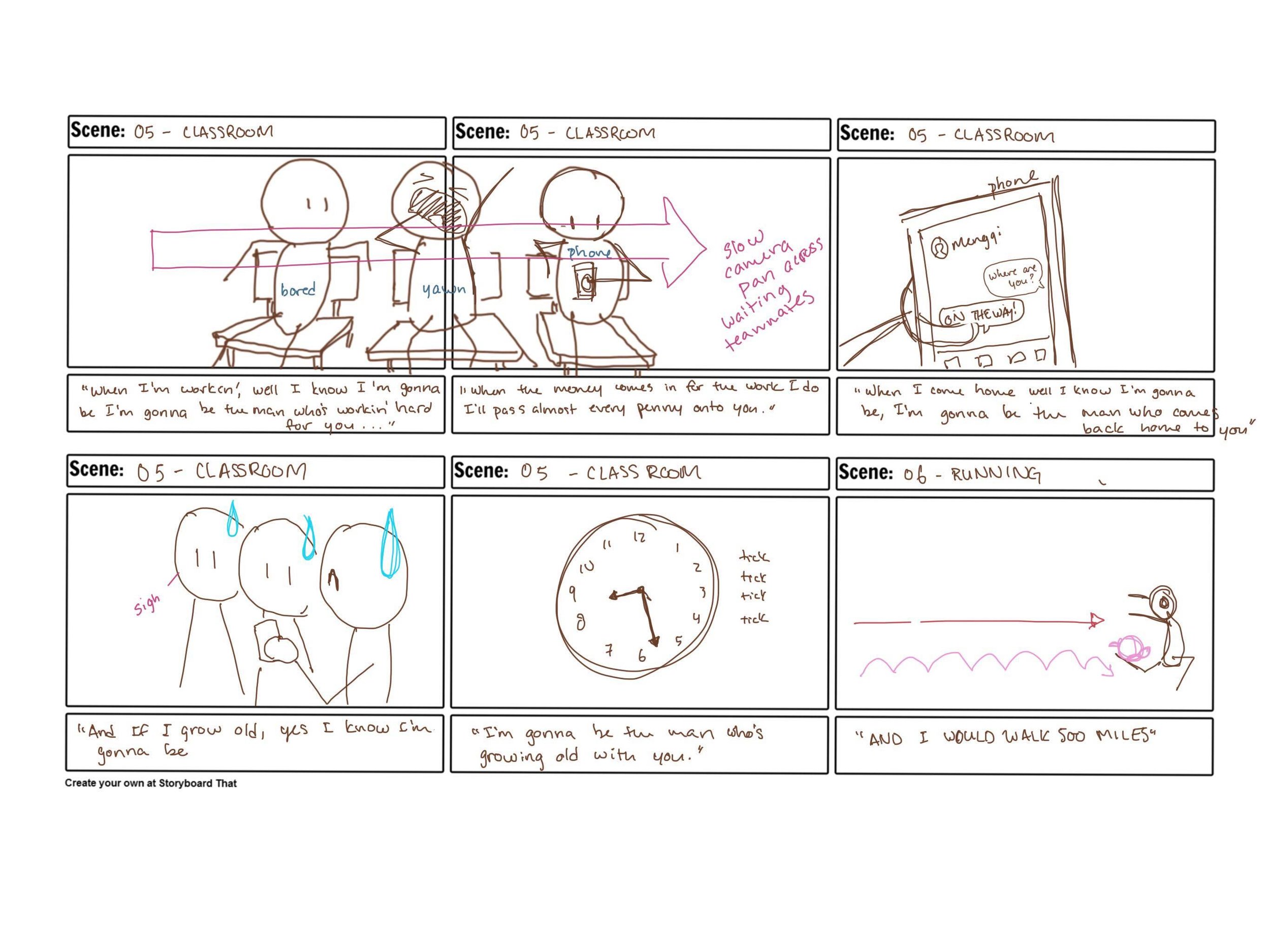Running Late - (Music Video)
Film Production
Carnegie Mellon Entertainment Technology Center
Visual Story Class: Music Video Assignment
Development Duration: 2 Weeks
Director, Producer, Editor: Euna Park (Adobe AfterEffects and Premiere)
Sprite Loops and Editor: Shuo Wang (Adobe Photoshop)
Sound Library: Rajat Gupta and Mengqi Wu
Music: 500 Miles by The Proclaimers
All sprites are the property of Nintendo
Edited with Adobe AfterEffects and Premiere
When we were first assigned this project, there was a split on whether we should go for a more emotional tone, or work on something fun. As a four person team, the split was even. A coin flip decided that we would aim to create something light and fun, and we began from there.
PRE-PRODUCTION
The first thing we had to do was decide a song. Separately, we used a Google Sheet to consolidate everyone's suggestions for songs, and then as a team, we reviewed each song. The requirement for adding a song to the Sheet was a video/story idea had to be attached to it. We discussed each song and idea, playing with mixing and matching songs and ideas, to find the concept that we could all agree on. As a team of four people, this agreement was vital to the success of the project. The song "500 Miles" lent itself extremely well to a theme already of running and traveling, and given our program (Masters of Entertainment Technology), we decided to incorporate video game elements to make it fun and interesting to watch.
From there, the story flowed pretty naturally. We brainstormed the visual elements and references that we could incorporate in running to school. Sticking with the visual prompt of 8-bit video games, we drew from our own childhood experiences and memories for inspiration. It was a fun conversation with lots of laughs and stories.
Once we decided on what we would do, I hammered out a rough storyboard for the video, trying to incorporate as many ideas we had come up with as possible. Not all the ideas in the storyboard ended up making it into the final video, but because our video was so dependent on visual effects, it was essential to visualize exactly what would occur so we could get the precise real-life footage we needed.
PRODUCTION
FILMING
Collecting our necessary live footage was a challenge because we required quick shots against so many different backgrounds. The first round of filming, we got all the indoor shots necessary as well as enough outdoor shots to piece together a rough cut of the live footage to our chosen song.
Due to time constraints, we were not able to film more of the shots of classmates waiting for our protagonist in the class, but the "gameplay" sequences ended up taking more screentime than predicted so it balanced out.
POST-PRODUCTION
FILM EDITING
Live action footage timing and editing was done in Adobe Premiere.
SPRITE IMPLEMENTATION
General sprite loops were prepared using Adobe Photoshop, and implemented into the finalized live-action cut using Adobe AfterEffects. Sprite images were sourced from the Internet.










